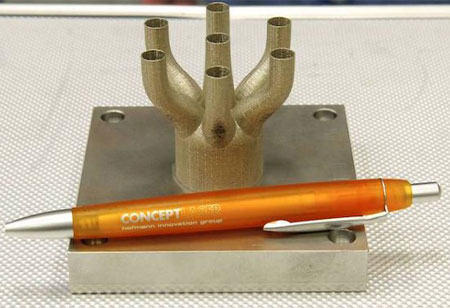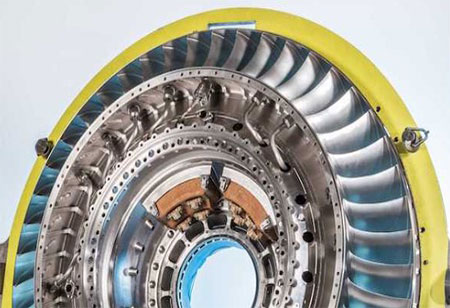
The aerospace sector is a major user of rapid additive manufacturing technology for prototyping, testing, and manufacturing of end-use parts. In terms of part geometry, material composition, and lead time, additive manufacturing provides unrivaled flexibility. There are different types of rapid prototyping utilized to make aerospace parts, including laser metal deposition, laser cusing, direct metal laser sintering, laser melting, and selective laser melting. It can also be used to repair complex components like engine blades/vanes, combustion chambers, and so on.
Other major issues driving the aerospace business to adopt rapid additive manufacturing technologies include complex geometry thin-walled aircraft engine components and structures, as well as material machining difficulties. This article will primarily focus on the existing applications of 3D printing in the aerospace sector, as well as prospective future breakthroughs that could change the industry.
Current Applications of 3D Printing in Aerospace
Selective laser sintering (SLS), selective laser melting (SLM), electron beam melting (EBM), and wire and arc additive manufacturing (WAAM) are the most prevalent types of 3D printing utilized to fulfill aerospace industry requirements (WAAM). These techniques allow for the production of highly dense components with mechanical and electrochemical qualities on par with those of more traditional manufacturing techniques, with no further processing required.
The processes of selective laser sintering (SLS) and direct metal laser sintering (DMLS) are essentially identical. Plastics, ceramics, and metals are just some of the materials that can be employed in SLS's part fabrication process. Nevertheless, metal alloys are the only materials DMLS can be utilized to create components from. SLM may be used to create objects from virtually any material. A powerful laser beam is used to heat and melt the powdered material.
Using electron beam melting (EBM), solid, defect-free components can be made using a focused stream of electrons. Only metals may be processed, which is the only actual disadvantage. This technique has replaced laser melting as the standard for making and fixing turbine blades.
Another rapid manufacturing technology is friction stir additive manufacturing (FSAM), which has been proven in a study to not only increase mechanical qualities but also achieve properties that are distinct from those reached using traditional manufacturing techniques. Stiffeners/stringers, wing spars, and longerons in skin panels are all useful applications for FSAM in the aerospace sector.
Instead of fusing powders, Electron Beam Freeform Fabrication (EBF3) fuses metals using an electron beam and a wire-based method. Structures made of materials including titanium, nickel-base alloys, high strength steels, aluminum, titanium aluminides, and metal matrix composites can be created using EBF3.
Another wire-based technique that successfully provides unlimited free-space weld metal deposition is wire plus arc additive manufacturing (WAAM). Walls that are vertical, horizontal, or inclined as well as mixed-material conic sections, enclosed sections, crossovers, and junctions can all be created using this method.
Moreover, larger components can be made because it is not restricted by a cabinet. Commercial-grade aeronautical wire is used in the procedure. Studies conducted at Cranfield University have revealed that the items acquired using WAAM are of an exceptionally high grade and are even superior than those produced by standard welding processes.
Specific Implementation of Rapid Additive Manufacturing Technology
Using Rapid Additive Manufacturing technology, NASA engineers fabricated this complex metal rocket injector element (shown below) for the J-2X engine of the next-generation Space Launch System (SLS).
 The injector for the rocket was made with a powdered nickel-chromium alloy utilizing the selective laser melting (SLM) additive manufacturing process. In SLM, a product is made by progressively melting layers of powder with the help of a laser beam. Intense irradiation causes the powder to heat up, and if enough energy is used, the powder will melt and pool as a liquid.
The injector for the rocket was made with a powdered nickel-chromium alloy utilizing the selective laser melting (SLM) additive manufacturing process. In SLM, a product is made by progressively melting layers of powder with the help of a laser beam. Intense irradiation causes the powder to heat up, and if enough energy is used, the powder will melt and pool as a liquid.
A rapid cooling and solidification of the molten pool then begins to shape the final product. The 3D-printed injector consisted of only two parts, compared to the 115 used in the conventionally made version. The jointless design of the item made it more durable and less prone to failure, improving the vehicle's safety as a whole.
For the first time, a titanium 3D-printed bracket was successfully installed on an Airbus A350 XWB during serial manufacture. Laser CUSING (one commercial SLM method) was used in the rapid prototyping process to create the bracket. Formerly created by milling and machining aluminum alloy, this component is now 3D printed using titanium (Ti) powder material, resulting in a weight reduction of over 30%.
A camera fairing (shown below) was manufactured by the American firm Advanced Composite Structures (ACS) for installation in the forward-looking infrared cameras of military aircraft. The layup tool was constructed using a Stratasys Fused Deposition Modeling (FDM) machine fed with CAD data. As opposed to CNC tooling, which can take many weeks to make, FDM tooling can be made in a single day.
Rolls-Royce created the largest 3D-printed engine component, a "front bearing housing," utilizing the technology. The titanium front bearing portion, which measures 1.5 m in diameter and 0.5 m in thickness and supports 48 aerofoils, was created using a rapid additive manufacturing technology called electron beam melting because of its complex geometry and size. In this method, a concentrated electron beam is used to melt metal powder, resulting in solid pieces with complicated geometries. The Rolls-Royce Trent XWB-97 engine's low and intermediate pressure compressor bearing is housed in the front bearing housing.
There has been a recent commencement to Additive Manufacturing study in China. The Chinese government has put a lot of money into rapid prototyping services in order to boost the country's high-value manufacturing industry and prioritize the mass manufacture of complex aerospace components utilizing domestically produced Chinese technologies.
The technology for mass producing laser cladding cells was created at China's Northwest Polytechnic University (NPU). The laser-cladding cell has a part-building capacity of 5 x 2.5 x 0.6 m, a deposition-accuracy of 1 mm, and a deposition-atmosphere purity of 50 ppm. In 2013, the Laser Cladding Cell at Northwest Polytechnic University (NPU) created the central wing spar for the "Comac C919" passenger-plane. According to NPU, this central wing spar is 5 meters long and has the same mechanical qualities as forging sections.
The Future Potential of 3D Printing in the Aerospace Sector
The future of 3D printing technology has great promise for improving aircraft component strength, reducing weight, and providing other advantages. Using a variety of nanomaterials, 3D printing at the nanoscale may soon be possible for the production of complex things with applications in aerospace and aviation. SpaceX and NASA, for example, are employing 3D printing technology on a massive scale to establish human communities on distant worlds like Mars.
Unmanned aerial vehicles and experimental aircrafts are two fields where 3D printing could see rapid adoption due to the low level of regulatory scrutiny they face. Additionally, 3D printing may be used in aircraft that remain in service long after their initial production run has ended. Rapid prototyping solves the problem of supporting such aircraft's complex parts. For instance, 3D-printed covers for radio switches have been installed in the Panavia Tornado's cockpit.
Aerospace manufacturers have been slow to adopt rapid prototyping services despite ongoing, extensive research efforts. Several factors contribute to this phenomenon. There is a lack of established testing and safety standards for rapid manufacturing in the aerospace industry.
 Since various additive manufacturing technologies are still developing toward full maturity, it is also difficult to identify a set of certification rules. The high energy demand is another reason for the slow adoption of rapid additive manufacturing; it is often many times greater than traditional manufacturing. Before the aerospace industry can fully adopt additive manufacturing, these concerns must be resolved.
Since various additive manufacturing technologies are still developing toward full maturity, it is also difficult to identify a set of certification rules. The high energy demand is another reason for the slow adoption of rapid additive manufacturing; it is often many times greater than traditional manufacturing. Before the aerospace industry can fully adopt additive manufacturing, these concerns must be resolved.
Conclusion
Even in the most specialized and sophisticated industries, like aerospace, 3D printing is changing the way things are made forever. The two primary requirements for products in this sector are lightweight and excellent safety. Weighing less because to fewer joints and more detailed geometry, 3D-printed objects have become increasingly common.
When it comes to safety, however, it has a long way to go before it can be considered the gold standard. Problems with printing patterns, porosity buildup, uneven print flow, etc., all need to be solved and ultimately eradicated. Just give it some time. If that happens, 3D printing will quickly become the norm in the aerospace sector, displacing older methods of production in the process.
We use cookies to ensure you get the best experience on our website. Read more...